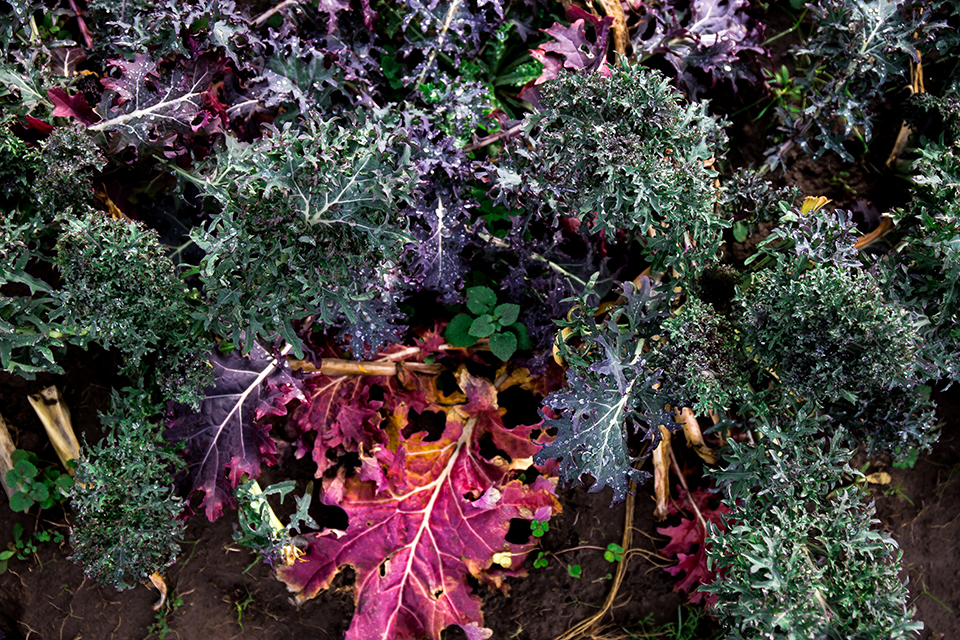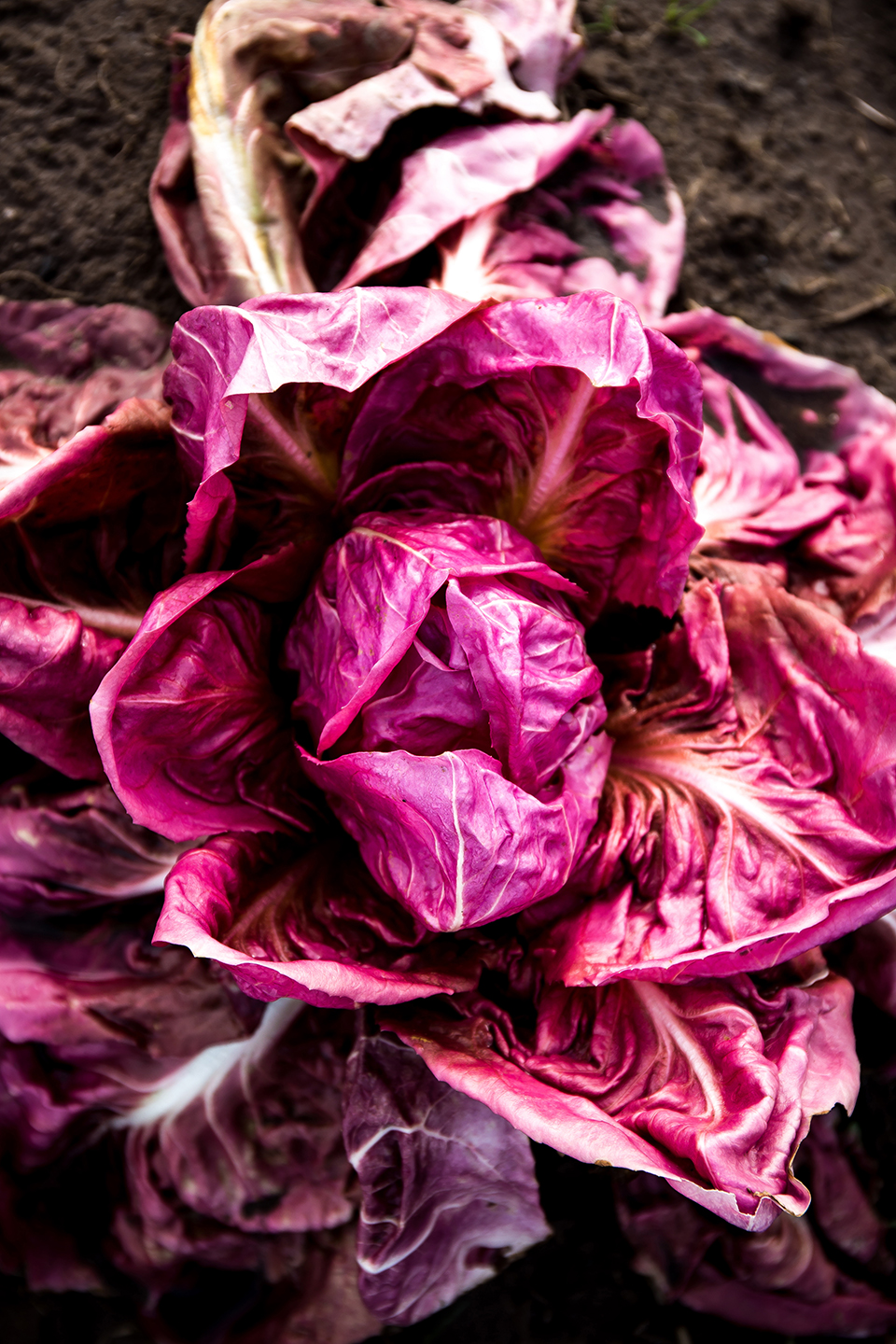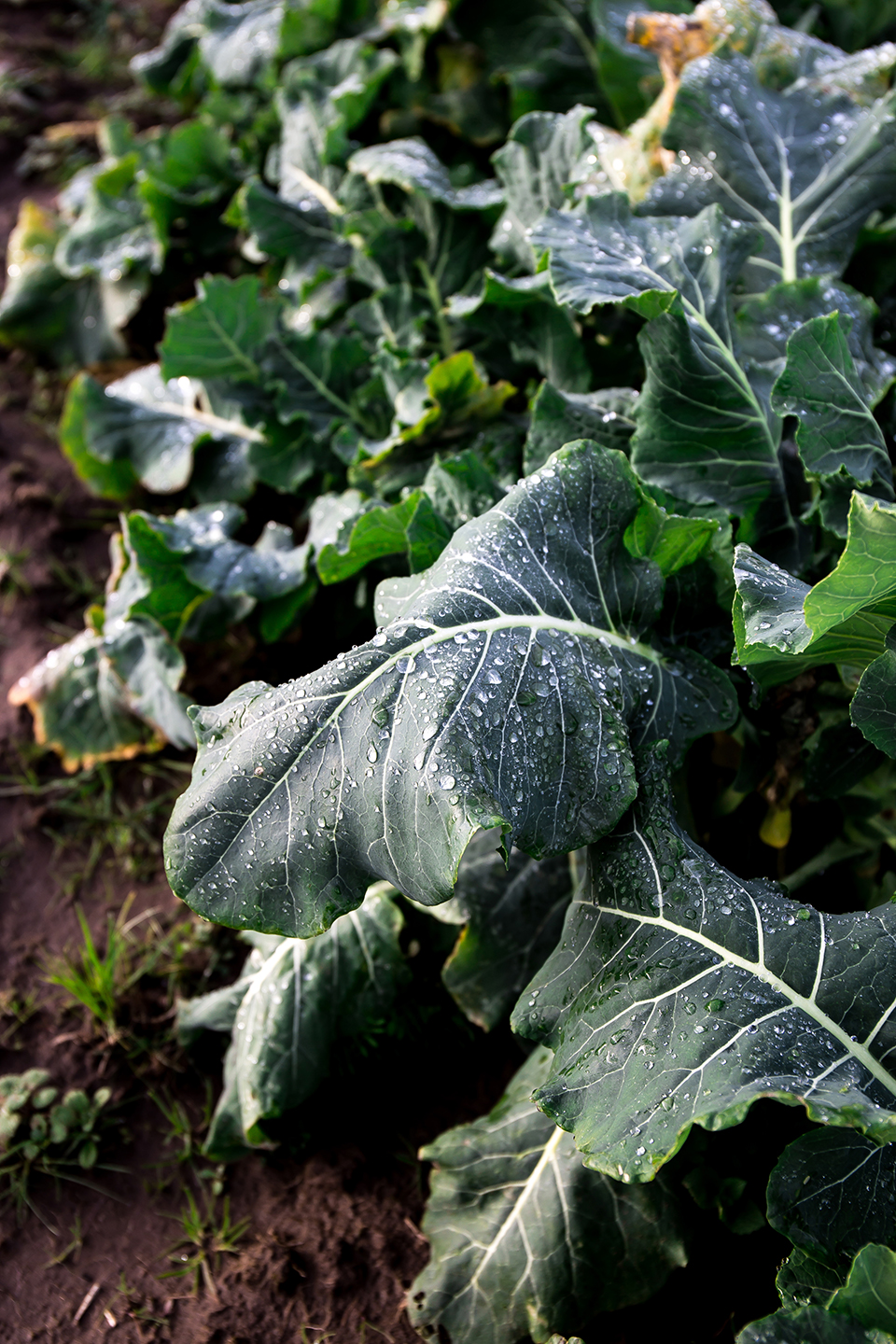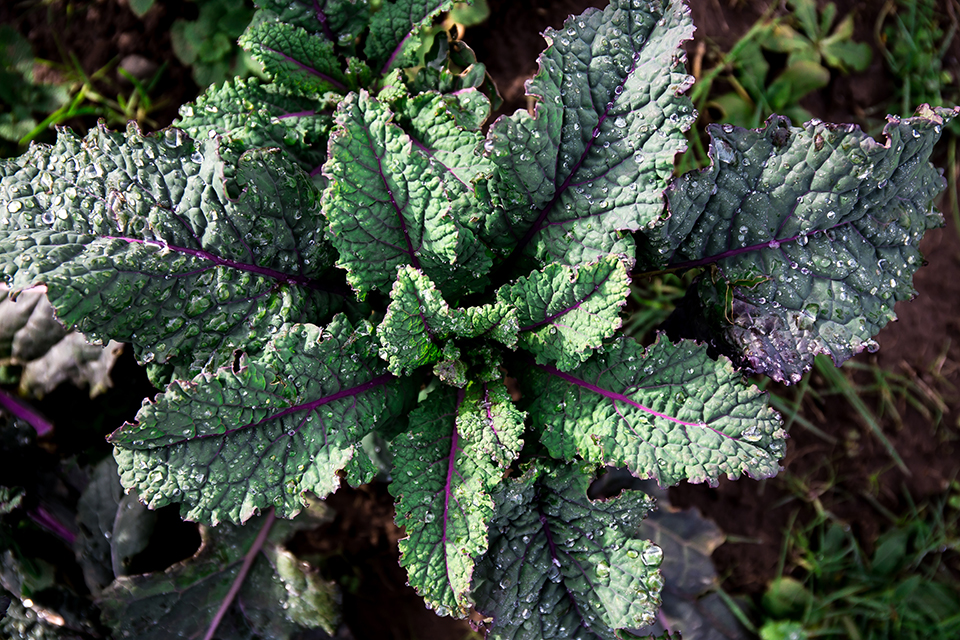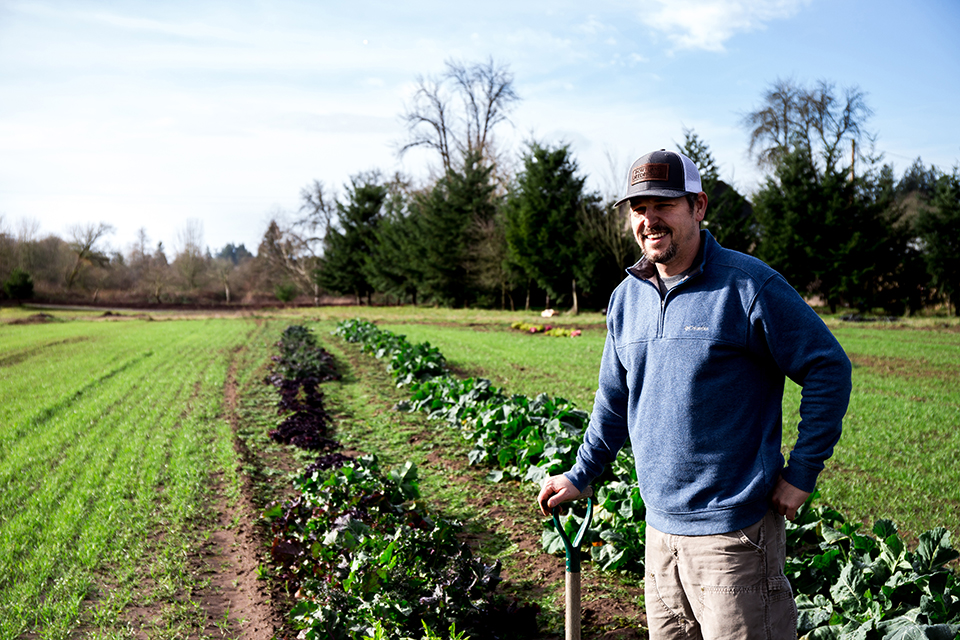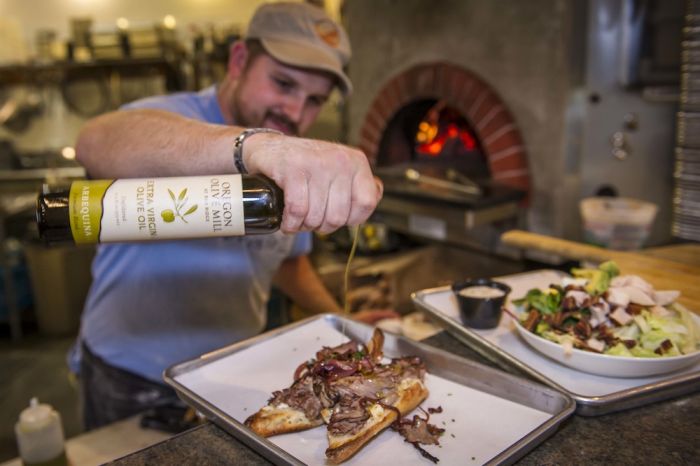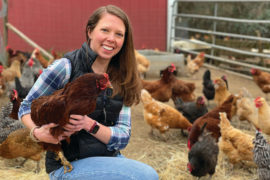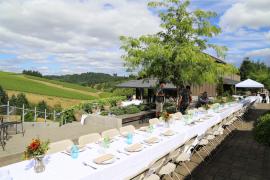Portland Seedhouse introduces new foods
written by Sophia McDonald | photos by Carly Diaz
The first farmers markets of spring bring a proliferation of greens, including arugula, collards, mustard, kale, frisee and dandelions. While they’re a far cry from the berries and tomatoes shoppers dream of during the cold winter months, these leafy vegetables can be just as flavorful, colorful and intriguing as those summer favorites.
Evan Gregoire, owner and founder of Portland Seedhouse, has long been an advocate for foods that other people have forgotten. He comes from a family of avid gardeners and started accumulating traditional and unusual plants around age 12. “It was similar to collecting baseball cards, except I was collecting things that have sustained lives and civilizations over thousands of years,” he said. “It was a pretty powerful thing.”
His self-taught career as a farmer began outside Eugene, where he and his former partner raised heritage ducks and other animals. After they parted ways, he turned to growing a variety of vegetables for sale to local restaurants. His main base now is a 5-acre farm near Aurora. Greens are a great crop because they can be grown in rotation with other vegetables. Cold-weather varieties are planted in the fall, just as the heat-loving plants begin to die off. They’re slowly harvested in the spring and removed just in time to plant peppers, squash and other warm-weather foods.
Portland Seedhouse began three years ago as a way to nurture his passion for plant collecting and diversify his income. Some of the seeds come from plants Gregoire has acquired from all over the world. “I have some favorites from Italy and Japan, because those two places tend to have similar growing climates to ours,” he said. On the top of his list: Italian chicory (“It’s an underrated and underused bitter green”), Japanese Mizuna (also known as spider mustard), quinoa greens, spigariello (an Italian green similar to broccoli), a blue and purple-streaked kale and yellow cabbage collards popular in North Carolina (“It’s a beautiful collard that’s almost tender like spinach, not like your grandmother’s leather”).
Other seeds are from varieties he’s developed himself or in partnership with other growers. “It’s been really exciting working with local breeders and figuring out what we can grow here,” he said. “What I’m trying to do is develop an open source for some of these genetics to be available.” In a time when seeds are being patented and genetics are becoming the property of multinational corporations, resources like his are vital to preserving diversity within the food system.
Oregon farmers try new things in the face of changing conditions
Like many farmers, Gregoire appreciates the entrepreneurial aspect of what he does. That mindset has helped him stay flexible in the face of the many challenges he’s faced. “We’ve had a lot of interesting climate,” he said. “Call it climate change if you want. We’ve had really hot summers we aren’t used to. The bug population is higher, and the funguses and blights come on harder. To deal with that, you have to be unpredictable. You can’t say, ‘This is the norm.’ You have to try new things and say, ‘If this doesn’t work, it doesn’t work.’”
Leafy greens are grown on so many Oregon farms that it’s impossible to know the total tonnage produced in the state. Mike Bondi, director of Oregon State University’s North Willamette Research and Extension Center in Aurora, said the reason they grow so prolifically in the Willamette Valley is historical as much as environmental. “In this region of the state, the Italian immigrant community was at the heart and soul of the early vegetable production. A lot of these growers were in the area now occupied by the Portland airport. They got pushed out of the city as it urbanized and started migrating south into Clackamas County.” The area’s sandy loam soil and relatively mild climate provided perfect conditions for growing the foods they were accustomed to eating.
The possibilities for using greens in the kitchen are endless. If you want to try cooking them, there’s no dish more classic than collard greens slowly braised with a ham hock and aromatics. Chef Sarah Schafer with Irving Street Kitchen in Portland shares her recipe.
The peppery, crisp flavor of arugula comes through best when left raw. Toss the greens with a hazelnut-vanilla vinaigrette, goat cheese and fresh radishes for a refreshing taste of spring. This preparation comes courtesy of chef Juan Zaragoza of Portland’s Gracie’s.
Ancient grain salads are almost as popular as kale right now. Combine both with duck al pastor with sautéed purple kale and farro from chef Chip Barnes of Alto Bajo in Portland. The duck breast is cooked with a blend of chiles, onions and spices before being sliced and placed on top of the salad.


